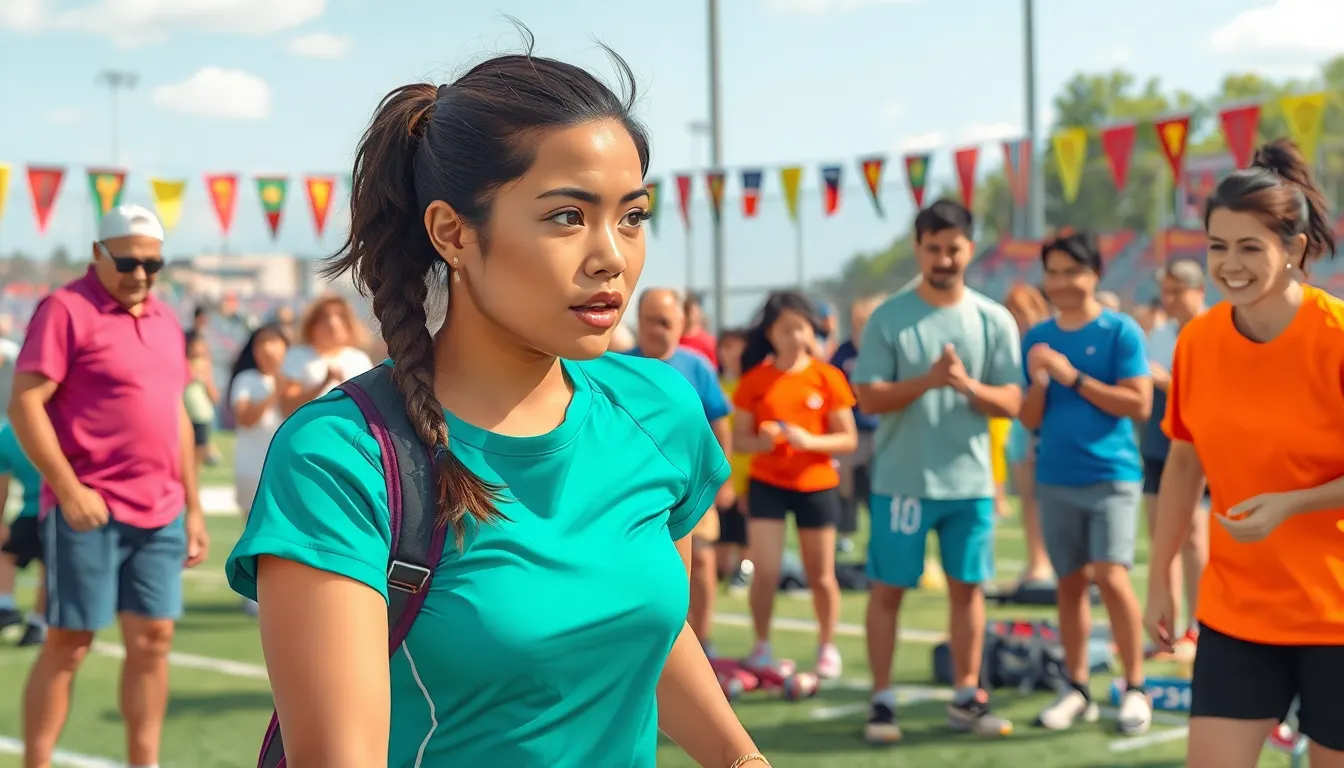In a world obsessed with football, basketball, and the occasional competitive eating contest, there exists a realm of sports that barely gets a nod. Enter the least popular sport, a hidden gem that’s often overlooked but brimming with quirky charm. While mainstream athletes bask in the limelight, this underdog quietly waits for its moment to shine—like that one friend who always brings the weird snacks to parties.
Least Popular Sport
The term “least popular sport” refers to athletic activities that attract fewer participants or spectators compared to mainstream sports. It’s essential to note that popularity can vary by region, culture, and demographic factors. Certain sports thrive in specific areas, while others remain obscure despite their unique attributes.
Consider sports like badminton or curling, which may have substantial followings in specific countries but not globally. Factors contributing to a sport’s popularity include media coverage, accessibility, and historical significance. Without extensive marketing efforts, some sports can easily remain in obscurity despite offering thrilling experiences.
Analyzing participation rates often reveals insights into which sports are least popular. For instance, the National Sporting Goods Association tracks sports participation in the USA, highlighting trends over the years. In 2021, activities like fencing and squash showed markedly lower participation compared to basketball or soccer.
Cultural perceptions influence how individuals view various sports. In areas where mainstream sports dominate, niche activities might struggle to gain traction. This perception often discourages participation, further perpetuating the cycle of obscurity.
Understanding the dynamics of least popular sports encourages exploration of diverse athletic activities. Recognizing these sports as hidden gems can inspire individuals to broaden their interests. By investigating lesser-known sports, enthusiasts might discover new hobbies that offer unexpected enjoyment and community.
Factors Contributing To Low Popularity

Various factors contribute to the low popularity of certain sports. These elements often intertwine, shaping perceptions and participation rates in unique ways.
Cultural Influence
Cultural attitudes significantly influence the popularity of sports. Communities may prioritize certain sports based on tradition, leading to lesser-known activities fading into the background. For example, in some regions, sports like lacrosse hold cultural significance, while others overlook them entirely. Media representation often reflects these preferences. Limited coverage for niche sports reinforces stereotypes and discourages potential participants. When young athletes grow up idolizing mainstream sports stars, they’re less likely to engage with lesser-known options. Thus, cultural narratives shape interest and investment in various athletic endeavors.
Accessibility Issues
Accessibility plays a crucial role in determining a sport’s popularity. Facilities for niche activities often remain scarce, limiting opportunities for practice and participation. For instance, sports such as handball or fencing may lack available venues or coaching resources in certain areas. Financial barriers also exist. Participation fees for specialized gear or training can discourage involvement, especially in low-income communities. Additionally, knowledge of the sport can be limited, with potential players unaware of how to start. These accessibility challenges ultimately hinder growth and engagement in less popular sports.
Comparison With Popular Sports
Comparing least popular sports with their more mainstream counterparts reveals significant differences in participation and audience engagement. For instance, activities like curling and fencing often attract minimal spectators compared to football or basketball that dominate the viewing landscape. Participation statistics show that sports like fencing and squash engage fewer than 300,000 players annually, while basketball boasts over 26 million players in the U.S. alone.
Accessibility greatly impacts these sports. Limited availability of facilities makes it hard for individuals to engage in lesser-known activities. In contrast, popular sports often benefit from abundant facilities, community backing, and widespread media promotion. Communities frequently support mainstream sports through funding, making participation easier for aspiring athletes.
Media coverage plays a crucial role in shaping perceptions. Popular sports garner extensive media attention, showcasing their athletes and events. This visibility enhances their popularity, increasing youth interest and participation. Meanwhile, niche sports struggle to receive the same level of exposure, contributing to their obscurity.
Cultural attitudes also influence engagement. Some cultures emphasize specific sports, often sidelining others. For example, lacrosse enjoys immense popularity in certain regions, overshadowing lesser-known activities. Encouraging exploration of these unique sports can foster interest and diversify community sports offerings.
Understanding these dynamics offers valuable insight into promoting lesser-known sports. Recognizing the factors at play can open doors for new participants and help highlight the charm of these hidden gems.
Unique Aspects Of Least Popular Sports
Lesser-known sports exhibit unique characteristics that differentiate them from mainstream activities. Often, these sports contain specialized rules and regulations not typically found in popular sports.
Lesser-Known Rules And Regulations
Regulations for niche sports frequently differ significantly from conventional games. Unique scoring systems may apply, varying requirements for equipment might exist, and specific field dimensions often come into play. For example, in fencing, the target area is only the torso, which contrasts starkly with the wide scoring area in football. In niche sports, officials maintain a strong influence due to the less standardized practices governing their gameplay. Participants adapt quickly to these distinct rules, which can enhance the overall experience and interest in engaging with the sport.
Community Engagement And Support
Engagement in lesser-known sports often thrives on localized community support. Dedicated clubs frequently cultivate a passionate following, creating opportunities for interaction and participation. Various local organizations organize events, workshops, and tournaments, allowing individuals to explore these activities in a social setting. In bocce, for instance, community leagues encourage friendly competition while fostering social bonds among participants. Such involvement not only promotes the sport but also strengthens community ties, inspiring newcomers to join and broaden the scope of local sports culture.
Conclusion
Exploring lesser-known sports reveals a fascinating world often overlooked by mainstream culture. These activities not only offer unique experiences but also foster community connections and personal growth. By shining a light on these hidden gems, individuals can challenge the status quo and discover new passions.
Encouraging participation in niche sports can lead to a more diverse and inclusive sports landscape. As communities begin to embrace these activities, they open doors for creativity and engagement that enrich the lives of those involved. It’s time to celebrate the charm of the underdog and recognize the value these sports bring to the athletic community.

